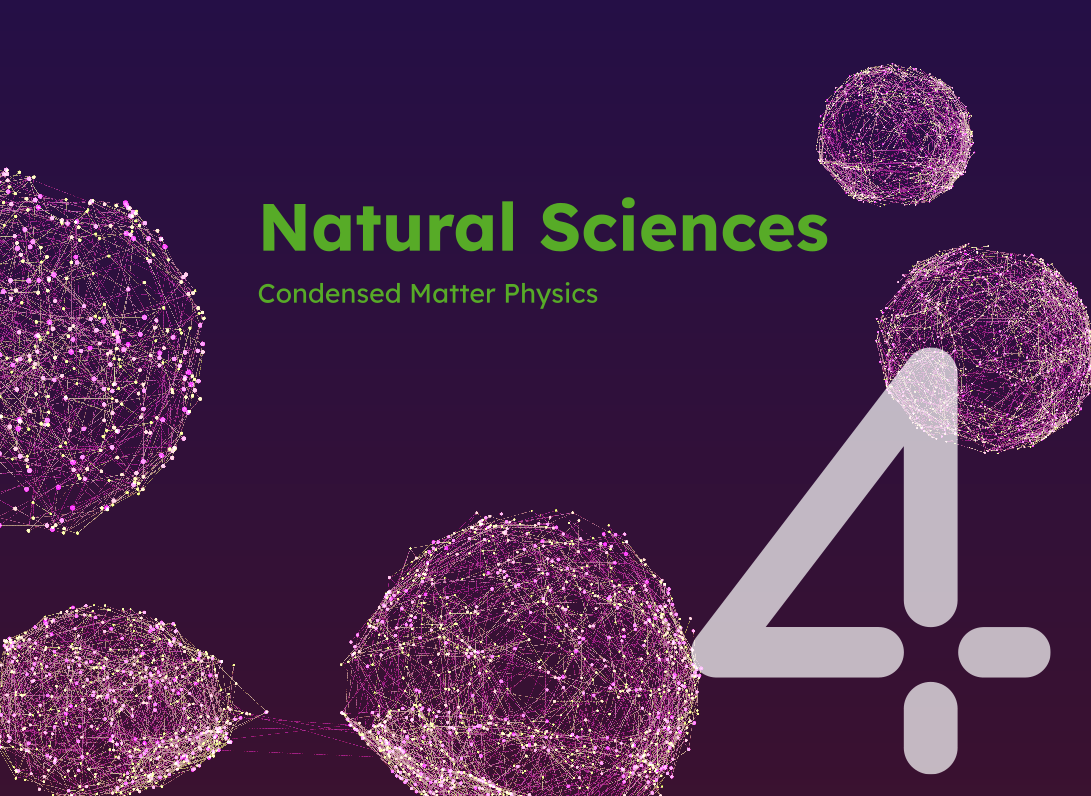Project
High-Throughput Discovery of MAB and Mbene Superconductors
We survey the landscape of MAB and Mbene superconductors out of our previous high-throughput predictions using first-principles calculations. To discover the superconducting behavior of MAB and Mbene phases, we performed DFT calculations to evaluate the electron-phonon interaction and to solve the anisotropic Migdal-Eliashberg equation to get the superconducting transition temperature. The current wort will shed light on the exploration of novel superconductors in borides.
Project Details
Project term
May 1, 2022–April 30, 2023
Affiliations
TU Darmstadt
University of South Carolina
Institute
Theory of Magnetic Materials
Project Manager
Principal Investigator
Methods
The density functional theory (DFT) calculations were performed using the QUANTUM ESPRESSO (QE) and VASP packages. We adopted relativistic norm-conserving pseudopotentials with the PerdewBurke-Ernzerhof exchange-correlation functional in the generalized gradient approximation (GGA). The dynamical matrices for phonons and the linear variation of the self-consistent potential for electron-phonon coupling were calculated within the framework of density-functional perturbation theory (DFPT). The anisotropic Migdal-Eliashberg (ME) equation was solved to evaluate the superconducting properties with the EPW code. The most time-consuming parts of the project are the dynamic matrices setup and the electron-phonon interaction calculations, which scale cubic as the system size (i.e. number of atoms) grows.
Results
Before jumping into the superconductivity calculation of MAB and Mbene, we did a comprehensive study of the anharmonicity effect and electron-phonon interactions of some specific materials, which can help us generate the workflow and benchmark for next-step calculations. Among them, based on the electron-phonon Wannier interpolation and Boltzmann transport equation, the carrier mobilities and mode-resolved scattering rates of cubic CsSnI3 and CsPbI3 were calculated, and the dominant scattering channels were analyzed. Our results reveal that the mobility takes 595.9 and 84.5 cm2/Vs at room temperature for CsSnI3 and CsPbI3, respectively, in good agreement with the experiment results. The longitudinal stretching mode of the Sn(Pb)-I bond with the frequency of 120 cm−1 plays a dominant role in carrier scattering. On the other hand, turning to two-dimensional material, we have systematically studied the electronic structures, phonon and charge transport properties, and thermoelectric properties of few-layered (from 1L to 4L) and bulk PdSe2 by first-principles calculations and Boltzmann transport theory. As the thickness increases, the energy levels of band edges relative to 4s of selenium move oppositely due to their different bonding states, leading to the power-law decrease of the band gap. Meanwhile, the electron effective mass decreases rapidly while the hole effective mass increases significantly compared with those unperturbed. Calculations on elastic constants reveal that both bulk and few-layered PdSe2 are mechanically stable, and the bulk is ductile with a Poisson’s ratio of 0.27. The shifts of Raman active modes with respect to the thickness as well as their Gruneisen parameters, are analyzed, and the underlying physics is reported.
Discussion
From our studies, we understand that, compared with the harmonic approximation of atom interactions, the inclusion of strong anharmonicity leads to the enhancement of atom interactions, which decreases the EPC strength and consequently increases carrier mobilities. After understanding the anharmonicity effect and electron-phonon interactions, we are calculating the superconductivity properties of MAB and Mbene now. The manuscripts are being prepared and will be submitted soon.
Additional Project Information
DFG classification: 307 Condensed Matter Physics
Software: VASP, QuantumEspresso, EPW, Alamode
Cluster: Lichtenberg
Publications
Zhang*, KC.; Shen, C; Zhang, H.; Li, YF.; Liu, Y. Effect of quartic anharmonicity on the carrier transport of cubic halide perovskites CsSnI3 and CsPbI3. Phys. Rev. B, 106, 235202. (2022) https://doi.org/10.1103/PhysRevB.106.235202
Shen, C. ; Li*, TS.; Zhang, Y.; Long, T.; Dai, M.; Shen, J.; Wolverton, C.; Zhang, H. Accelerated Screening of Ternary Chalcogenides for Potential Photovoltaic Applications, J. Am. Chem. Soc., 145, 40, 21925-21936 (2023) https://doi.org/10.1021/jacs.3c06207
Hu, K. ; Xie, R.; Shen*, C.; Peng, H.; Liu, H.; Zhang, H. High-throughput design of Co-based magnetic Heusler compounds, Acta Mater. 259, 119255 https://doi.org/10.1016/j.actamat.2023.119255
Wang, H.; Jiao, Y.; Wu, B.; Wang*, D.; Hu, Y.; Liang, Shen*, F. C.; Knauer, A; Wang*, D Ren.; Aken, P. A.; Zhang, H.; Grätzel, M.; Sofer, Z.; Schaaf, P. Exfoliated 2D Layered and Nonlayered Metal Phosphorous Trichalcogenides Nanosheets as Promising Electro-catalysts for CO2 Reduction. Angew. Chem. 135, e202217253. (2023) https://doi.org/10.1002/anie.202217253
Lin, S.; Shen*, C.; Zhang, H. Electric-field-tunable thermal conductivity in anti-ferroelectric materials. Mater. Today Phys. 32, 100998 (2023) https://doi.org/10.1016/j.mtphys.2023.100998
Shen, C.; Dai, M.; Liang, F.; Xie, W.; Weidenkaff, A.; Tadano*, T.; Zhang*, H. Impact of quartic anharmonicity on lattice thermal transport properties of EuTiO3: A comparative theoretical and experimental investigation. Mater. Today Phys., (34), 101059 (2023) https://doi.org/10.1016/j.mtphys.2023.101059
Shen, C. Doctoral Thesis: Designing Functional Materials Driven by Lattice Degree of Freedom, Technische Universität Darmstadt, 10.26083/tuprints-00023665 (2022)
